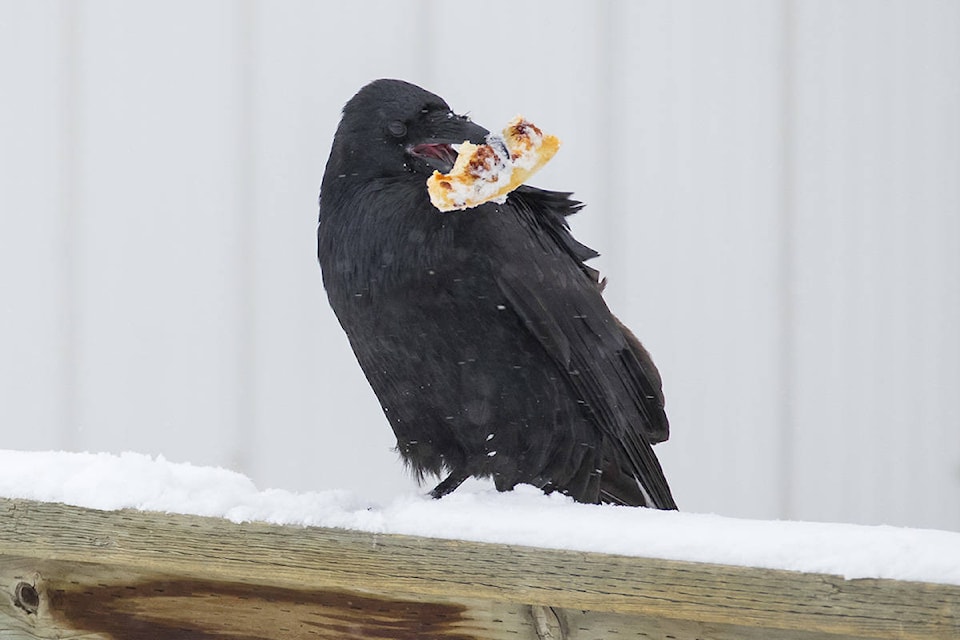If you’ve reported a dead raven to Yukon conservation officers in recent years, chances are its liver has gone on to do some greater good for science.
For around five years now, Environment Yukon’s Animal Health Unit has been collecting the livers of ravens, golden eagles and bald eagles and testing them for lead with the goal of understanding what a “normal” level of lead exposure looks like and how different levels affect birds’ health and mortality rates.
The initiative, officially known as the avian lead surveillance program, began in 2013 when two golden eagles with symptoms such as lethargy and drooping heads were brought in to Environment Yukon, environment laboratory coordinator Meghan Larivee said. The birds eventually died, and necropsies performed on their bodies uncovered signs of potential exposure to lead.
“We had the livers of both of those birds tested and they came back as high-normal, so still within normal range for lead levels in the bird, but potentially suggesting that lead exposure may have contributed to some of the other issues, health issues, that had caused their demise,” Larivee said. “And so from that, we decided to begin looking at lead exposure in wild birds as a program for the animal health unit, and since that time, we’ve been opportunistically sampling the livers in birds.”
The livers were chosen for testing because, while lead can impact the entire body, Larivee explained that the liver acts as a filter of sorts, which means, if lead is indeed present, it will accumulate a little faster there than in other organs. As well as scavenging birds, the project was also originally intended to collect data on waterfowl and gulls, Larivee said. However, dead waterfowl are harder to come by, meaning the unit only has a very small sample size, and gulls didn’t show any abnormal levels of lead, so that prong of the project was discontinued.
Although lead is a metal that’s naturally present in the environment, Larivee said that scavenging birds are at particular risk of being exposed to higher amounts than normal on account of their diets.
“The source of potential lead in the environment that scavenging birds can be exposed to is really from hunted animals, so harvested animals on the landscape where human hunters are using lead as ammunition in their guns to shoot game animals such as deer, moose, caribou, elk, and leaving the gut piles on the landscape,” she explained.
“And sometimes those gut piles can contain lead fragments and the scavenging birds can pick these up and that is a situation that we’ve known about for quite a long time across North America and it helps us, as the Yukon jurisdiction, to also be able to compare our results with other jurisdictions.”
On average, Larivee said the animal health unit sends out about 30 livers a year for testing, collecting the livers from every dead bird brought in by conservation officers or the public. Since the program’s inception, the unit has received results on 132 samples, and another 60 were recently sent out for testing. So far, only one result has come back that showed the bird — in that case, a raven — had a toxic level of lead in its system. The rest of the results have largely been in the normal range.
But while death by lead poisoning isn’t exactly a huge threat at the moment to the Yukon’s scavenging birds, long-term lead exposure and toxicity can impact animals’ health and behaviours in ways that, while not the primary cause of, can contribute to an early demise.
“Animals that are on the sort of higher level might start to show signs that are quite indicative of lead toxicity, which are often neurological in nature, so they may have drooping wings, dropping heads, because lead can cause the brain to swell,” Larivee said. “There can also be neurological issues that go on with the animal so that they can’t move properly, they almost look like they’re intoxicated.”
That may be why, for example, a raven messes up its landing on a hydro pole and gets electrocuted, or a golden eagle sitting on the road can’t leap or fly out of the way of an oncoming car in time.
While five years and more than 130 samples may seem like a lot, Larivee said the project is still in its early stages, and, in order to paint a proper, scientific picture of what’s going on, the animal health unit is always hoping to get more samples to add to its database.
“We really encourage people to let us know if they find an animal, any animal, that’s been found dead or may have died from an obvious reason, to either call conservation officers to bring that animal to Environment (Yukon),” she said.
“(We) rely on quite a bit of public participation in providing us the samples.”
Contact Jackie Hong at jackie.hong@yukon-news.com
